[ATV-1] 'Jules Verne' : préparation
Page 21 sur 30
Page 21 sur 30 •  1 ... 12 ... 20, 21, 22 ... 25 ... 30
1 ... 12 ... 20, 21, 22 ... 25 ... 30 
avec cette image sur le portail, j'ai l'impression que le compte à rebours a commencé;
:hermes:
:hermes:
zx- Messages : 2650
Inscrit le : 02/12/2005
A quelle heure est prévu le lancement ? ...je suppose qu'il y a une fenêtre de 10 minutes à peine pour un rendez-vous avec l'ISS...

Fabs- Messages : 819
Inscrit le : 26/05/2006
Age : 55
Localisation : STRASBOURG
Fabs a écrit:A quelle heure est prévu le lancement ? ...je suppose qu'il y a une fenêtre de 10 minutes à peine pour un rendez-vous avec l'ISS...
Malheureusement c'est prévu pour le moment à 04h24 GMT (05h24 pour Paris), le 8 Mars. Autant dire que je crains que personne ne soit au rendez vous.
J'espère que le rendez vous sera à une heure visible sinon quel gachi mediatique.
Le programme:
08 Mars - Lancement ATV-1
12 Mars - Test ATV CAM (Collision Avoidance Maneuver/Manouvre d'evitement de collision)
18 Mars - Placement en orbite d'attente
29 Mars - Test ATV-1
31 Mars - Test ATV-1
03 Avril - Test ATV-1 (amarrage)
Le 8 mars étant un samedi, je serai là pour le direct à 5 heures 24...(mon épouse va une fois de plus me traiter de fou !!!) mais je crois que nous devons monter qu'il y a un intérêt public pour les réalisations de l'Europe spatiale !!! Go, Jules !!!!

Fabs- Messages : 819
Inscrit le : 26/05/2006
Age : 55
Localisation : STRASBOURG
Moi aussi, je serai là : 5h30 c'est pas si tôt après tout pour un lancement de cette importance
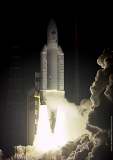
septelophloppe- Messages : 94
Inscrit le : 23/08/2007
Age : 41
Localisation : Auvergne
pas question de rater ca, je serais debout a 5h24. :bounce:

zx- Messages : 2650
Inscrit le : 02/12/2005
Age : 63
Localisation : Loir et Cher
est ce que quelqu'un enregistreras le lancement ? merci d'avance

grysor- Messages : 3316
Inscrit le : 09/06/2006
Age : 52
Localisation : bretagne rennes
Je serais la aussi, plus on est de fou, plus on rit :D

Commander Ham- Messages : 825
Inscrit le : 06/03/2007
Age : 42
Localisation : Mars Base Camp 01
5h30!!!Pendant mes vacances!!! :affraid: No problemo, vous pouvez compter sur moi!!!! 

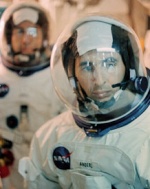
Gaétan- Messages : 1274
Inscrit le : 16/07/2007
Age : 33
Localisation : Plouzané
Fabs a écrit:A quelle heure est prévu le lancement ? ...je suppose qu'il y a une fenêtre de 10 minutes à peine pour un rendez-vous avec l'ISS...
Bonjour,
le lancement Ariane 5ES - ATV Jules Verne est un lancement à l'heure pile. Pas de fenêtre : ça passe, ou on remet ça au lendemain.
L'instant exact de lancement (à la seconde près) n'est pas encore connu. Il le sera trois jours avant.
Ce sera aux environs de 4h23 UTC, c'est d'ailleurs l'instant que avons choisis pour dérouler la chronologie de Répétition Générale (RG) dans la nuit du vendredi 29 février au samedi 1er mars.
Les prochaines étapes sont :
lundi 25 février : coiffage de l'ATV Jules Verne
mercredi 27 février : remplissage du SCA (système de contrôle d'attitude) d'Ariane 5ES en hydrazine
jeudi 28 février : remplissage de l'EPS (étage supérieur) en monométhyl hydrazine
vendredi 29 février : remplissage de l'EPS en péroxyde d'azote, puis dans la nuit Répétition Générale
mardi 4 mars : revue d'aptitude au lancement d'ATV Jules Verne
mercredi 5 mars : revue d'aptitude au lancement d'Ariane 5ES L528
jeudi 6 mars : transfert L528/ATV Jules Verne du BAF (bâtiment d'assemblage final) en ZL3 (zone de lancement)
vendredi 7 mars : chronologie de lancement qui débutera dans l'après-midi.
Pour le vol d'Ariane 5ES/ATV Jules Verne, la mission sera très longue, avec comme grandes étapes :
H0 : allumage Vulcain 2
environ H0 + 17 min : fin de la 1ère phase propulsée d'Ariane 5ES (L528/ATV sur une orbite 130 km / 260 km / 51,6°)
phase balistique
environ H0 + 62 min : 2nd boost EPS (30 secondes) (L528/ATV sur une orbite circulaire 260 km / 51,6°)
environ H0 + 67 min : séparation ATV Jules Verne (pris en charge par l'ATV-CC à Toulouse)
phase balistique
environ H0 + 2h24min : 3ème boost EPS (20 secondes) pour désorbiter EPS/Case/SDC
environ H0 + 2h45min : fin de mission de suivi, l'EPS entrant dans l'atmosphère (120 km d'altitude).
C'est la dernière ligne droite. Ca fait bizarre de savoir que c'est bientôt fini ici à Kourou.
Mais il restera encore de belles choses en orbite, avec le docking prévu le 3 avril...
Thierry
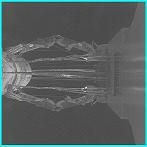
Titi DDO- Messages : 44
Inscrit le : 25/12/2006
Age : 53
Localisation : Kourou
Je serais la aussi bien sur! je ne raterais ça pour rien au monde 

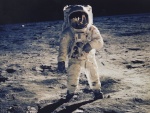
maxime- Messages : 385
Inscrit le : 10/03/2007
Age : 34
Localisation : Toulouse
:eeks:
Vous avez une idée ou des hypotheses de l'avenir et de la suite des projets sur kourou, compte tenu du repositionnement du site à un niveau plus européen ?
:)
Vous avez une idée ou des hypotheses de l'avenir et de la suite des projets sur kourou, compte tenu du repositionnement du site à un niveau plus européen ?
:)

zx- Messages : 2650
Inscrit le : 02/12/2005
Age : 63
Localisation : Loir et Cher
Merci pour ces précisions très interessantes Thierry. J'imagine qu'au CSG ce doit être l'effervescence en ce moment.
Dommage que l'heure ne soit vraiment pas très adaptée à l'europe mais les impératifs de missions obligent.
N'hésites pas à nous tenir au courant de la suite, meme si j'imagine que tu auras peu de temps. Est ce toi le DDO ? est ce agnès à la sauvegarde ?
Dommage que l'heure ne soit vraiment pas très adaptée à l'europe mais les impératifs de missions obligent.
N'hésites pas à nous tenir au courant de la suite, meme si j'imagine que tu auras peu de temps. Est ce toi le DDO ? est ce agnès à la sauvegarde ?
Kourou vit à l'heure du programme ISS, dans toute sa splendeur !
Ca doit être génial.
Ca doit être génial.
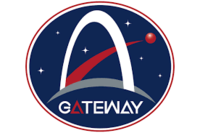
Fabien- Messages : 6862
Inscrit le : 23/09/2005
Age : 46
Localisation : Paris (75)
Joint ESA And Russian Team In Moscow Ready To Support Jules Verne
During the Jules Verne mission, the ATV will perform automated manoeuvres which are closely monitored by almost 60 controllers in Toulouse, Houston and Moscow. For the first time in history, three space centres will interact from different sides of the world.
by Staff Writers
Moscow (ESA) Feb 25, 2008
When the Jules Verne Automated Transfer Vehicle (ATV) is launched in early March it will use several key spacecraft hardware items such as the docking and refuelling systems, and the Kurs radar, procured in Russia. European and Russian engineers have worked together to adapt them from their previous use on the Russian spacecraft Progress and Soyuz to the much larger 20-tonne ATV vessel.
Several weeks after launch from Europe's Spaceport in Kourou, French Guiana, Jules Verne will reach the International Space Station (ISS) orbiting about 400 km above our heads, and rendezvous and dock with the Russian segment of the ISS. Jules Verne and the Russian Service Module will then form an integrated European/Russian complex that will have to function as one vehicle for up to 6 months.
The ATV and the Russian Service Module will not only support together critical functions such as refuelling in orbit and re-boosting the ISS, but they will also share numerous interfacing systems like power, data handling, thermal and life support systems.
Obviously this requires close links between European and Russian engineering communities, throughout the entire Jules Verne mission. To meet this need, in 2004 ESA set up a small Engineering Support Team (EST-MO) co-located at Moscow Control Centre.
The main function of this group, varying from 8 to 15 people, is to monitor the behaviour of Jules Verne in relation to its Russian components or Russian interfaces, and to interact with the local ISS Russian engineering representatives on any matters requiring direct technical exchanges.
This support group also has to work in close coordination with the main ATV Engineering Support Team based at the ATV Control Centre in Toulouse (ATV-CC).
Experts to monitor Jules Verne's flight
At the ATV-CC, next to the Flight Control Team in charge of the ATV operations, sits the main Engineering Support Team which includes experts from ESA and prime contractor EADS-Astrium, constantly monitoring the data and daily operations planning, and ready to support the flight controllers if anything unexpected happens with the ATV systems.
Since they know all the hardware and systems, they are able to propose quick corrective measures in case of an anomaly or failure.
The official language during ATV operations is English, including communications with Moscow and Houston, but the EST-MO group can also switch to Russian when both parties are Russian. EST-MO experts do not speak directly to flight controllers nor send commands to the ATV.
This complex setup, about to be put to the test for the first time with Jules Verne, has of course required a thorough training programme. Since July 2007, the EST-MO team members, from both ESA and RSC-Energia, have participated in a series of Joint Integrated Simulations (JIS), involving all three main Control Centres in Toulouse, Moscow and Houston.
The JIS programme has covered both nominal and off-nominal mission scenarios. "One example of what the future EST-MO role could be was when the 'trainer' suddenly ordered a failure scenario with the interruption of the docking system probe retraction, shortly after the ATV was captured by the ISS.
At the same time, an unexpected simulator behaviour added further complexity to this training session. This was eventually resolved because the ATV docking system experts were able to establish a direct technical exchange with their ISS counterparts sitting in the next room", said Massimo Cislaghi, ESA's EST-MO Leader.
Although the main EST-MO working location has been and will be the ESA Moscow Support Room (EMSR) located inside the Moscow premises, some of the EST-MO training has taken place directly at ATV-CC in Toulouse, in order to allow the team to get acquainted with that working environment and with their colleagues based there. During actual flight operations they will coordinate mainly through voice exchanges.
At the end of the EST-MO training programme all ESA and RSC-Energia Russian Systems specialists are ready to face the various situations practised in the training exercises.
"At the same time, their wide experience and know-how accumulated through dozens of Russian vehicle rendezvous, docking and attached operations, represent a guarantee of their ability to face unforeseen events that can never be excluded for such a challenging programme," added Cislaghi.
During the Jules Verne mission, the ATV will perform automated manoeuvres which are closely monitored by almost 60 controllers in Toulouse, Houston and Moscow. For the first time in history, three space centres will interact from different sides of the world.
[www.space-travel.com]
During the Jules Verne mission, the ATV will perform automated manoeuvres which are closely monitored by almost 60 controllers in Toulouse, Houston and Moscow. For the first time in history, three space centres will interact from different sides of the world.
by Staff Writers
Moscow (ESA) Feb 25, 2008
When the Jules Verne Automated Transfer Vehicle (ATV) is launched in early March it will use several key spacecraft hardware items such as the docking and refuelling systems, and the Kurs radar, procured in Russia. European and Russian engineers have worked together to adapt them from their previous use on the Russian spacecraft Progress and Soyuz to the much larger 20-tonne ATV vessel.
Several weeks after launch from Europe's Spaceport in Kourou, French Guiana, Jules Verne will reach the International Space Station (ISS) orbiting about 400 km above our heads, and rendezvous and dock with the Russian segment of the ISS. Jules Verne and the Russian Service Module will then form an integrated European/Russian complex that will have to function as one vehicle for up to 6 months.
The ATV and the Russian Service Module will not only support together critical functions such as refuelling in orbit and re-boosting the ISS, but they will also share numerous interfacing systems like power, data handling, thermal and life support systems.
Obviously this requires close links between European and Russian engineering communities, throughout the entire Jules Verne mission. To meet this need, in 2004 ESA set up a small Engineering Support Team (EST-MO) co-located at Moscow Control Centre.
The main function of this group, varying from 8 to 15 people, is to monitor the behaviour of Jules Verne in relation to its Russian components or Russian interfaces, and to interact with the local ISS Russian engineering representatives on any matters requiring direct technical exchanges.
This support group also has to work in close coordination with the main ATV Engineering Support Team based at the ATV Control Centre in Toulouse (ATV-CC).
Experts to monitor Jules Verne's flight
At the ATV-CC, next to the Flight Control Team in charge of the ATV operations, sits the main Engineering Support Team which includes experts from ESA and prime contractor EADS-Astrium, constantly monitoring the data and daily operations planning, and ready to support the flight controllers if anything unexpected happens with the ATV systems.
Since they know all the hardware and systems, they are able to propose quick corrective measures in case of an anomaly or failure.
The official language during ATV operations is English, including communications with Moscow and Houston, but the EST-MO group can also switch to Russian when both parties are Russian. EST-MO experts do not speak directly to flight controllers nor send commands to the ATV.
This complex setup, about to be put to the test for the first time with Jules Verne, has of course required a thorough training programme. Since July 2007, the EST-MO team members, from both ESA and RSC-Energia, have participated in a series of Joint Integrated Simulations (JIS), involving all three main Control Centres in Toulouse, Moscow and Houston.
The JIS programme has covered both nominal and off-nominal mission scenarios. "One example of what the future EST-MO role could be was when the 'trainer' suddenly ordered a failure scenario with the interruption of the docking system probe retraction, shortly after the ATV was captured by the ISS.
At the same time, an unexpected simulator behaviour added further complexity to this training session. This was eventually resolved because the ATV docking system experts were able to establish a direct technical exchange with their ISS counterparts sitting in the next room", said Massimo Cislaghi, ESA's EST-MO Leader.
Although the main EST-MO working location has been and will be the ESA Moscow Support Room (EMSR) located inside the Moscow premises, some of the EST-MO training has taken place directly at ATV-CC in Toulouse, in order to allow the team to get acquainted with that working environment and with their colleagues based there. During actual flight operations they will coordinate mainly through voice exchanges.
At the end of the EST-MO training programme all ESA and RSC-Energia Russian Systems specialists are ready to face the various situations practised in the training exercises.
"At the same time, their wide experience and know-how accumulated through dozens of Russian vehicle rendezvous, docking and attached operations, represent a guarantee of their ability to face unforeseen events that can never be excluded for such a challenging programme," added Cislaghi.
During the Jules Verne mission, the ATV will perform automated manoeuvres which are closely monitored by almost 60 controllers in Toulouse, Houston and Moscow. For the first time in history, three space centres will interact from different sides of the world.
[www.space-travel.com]
Agnès n'en sera pas, elle s'occupe du soyuz.Mustard a écrit: Est ce toi le DDO ? est ce agnès à la sauvegarde ?
Elle devrait être sur le lancement suivant.
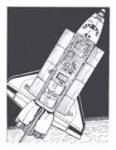
vp- Messages : 4557
Inscrit le : 21/09/2005
Age : 50
Localisation : RP
vp a écrit:Agnès n'en sera pas, elle s'occupe du soyuz.Mustard a écrit: Est ce toi le DDO ? est ce agnès à la sauvegarde ?
Elle devrait être sur le lancement suivant.
Du pas de tir Soyouz ? Est-ce l'europe qui aura la responsabilité de la sauvegarde de ce lanceur ?
Non de la sauvegardeMustard a écrit:vp a écrit:Agnès n'en sera pas, elle s'occupe du soyuz.Mustard a écrit: Est ce toi le DDO ? est ce agnès à la sauvegarde ?
Elle devrait être sur le lancement suivant.
Du pas de tir Soyouz ?
Oui.Mustard a écrit:Est-ce l'europe qui aura la responsabilité de la sauvegarde de ce lanceur ?

vp- Messages : 4557
Inscrit le : 21/09/2005
Age : 50
Localisation : RP
On a pas encore les photos de l'ATV coiffé?
Ce n'était pas hier qu'il recevait ce dernier habit?
Ce n'était pas hier qu'il recevait ce dernier habit?

Commander Ham- Messages : 825
Inscrit le : 06/03/2007
Age : 42
Localisation : Mars Base Camp 01
Si on a des photos :cheers:
Sources : http://www.esa.int/esa-mmg/mmg.pl?type=I&single=y&mission=Automated%20Transfer%20Vehicle%20(ATV)&start=1
![[ATV-1] 'Jules Verne' : préparation - Page 21 V181_p14](https://i.servimg.com/u/f30/11/81/22/82/v181_p14.jpg)
![[ATV-1] 'Jules Verne' : préparation - Page 21 V181_p10](https://i.servimg.com/u/f30/11/81/22/82/v181_p10.jpg)
![[ATV-1] 'Jules Verne' : préparation - Page 21 V181_p12](https://i.servimg.com/u/f30/11/81/22/82/v181_p12.jpg)
![[ATV-1] 'Jules Verne' : préparation - Page 21 V181_p13](https://i.servimg.com/u/f30/11/81/22/82/v181_p13.jpg)
Sources : http://www.esa.int/esa-mmg/mmg.pl?type=I&single=y&mission=Automated%20Transfer%20Vehicle%20(ATV)&start=1
![[ATV-1] 'Jules Verne' : préparation - Page 21 V181_p14](https://i.servimg.com/u/f30/11/81/22/82/v181_p14.jpg)
![[ATV-1] 'Jules Verne' : préparation - Page 21 V181_p10](https://i.servimg.com/u/f30/11/81/22/82/v181_p10.jpg)
![[ATV-1] 'Jules Verne' : préparation - Page 21 V181_p12](https://i.servimg.com/u/f30/11/81/22/82/v181_p12.jpg)
![[ATV-1] 'Jules Verne' : préparation - Page 21 V181_p13](https://i.servimg.com/u/f30/11/81/22/82/v181_p13.jpg)

Asphalte- Messages : 628
Inscrit le : 03/12/2007
Age : 42
Localisation : Dans les monts beaujolais !
shuttlegirl a écrit:Super ces photos !
Petite question en passant : à quoi servent les sacs rouges que tous portent à la taille ?
On en a djà parlé et ce serait des masques en cas de fuite d'hypergols. ;)

Asphalte- Messages : 628
Inscrit le : 03/12/2007
Age : 42
Localisation : Dans les monts beaujolais !
Page 21 sur 30 •  1 ... 12 ... 20, 21, 22 ... 25 ... 30
1 ... 12 ... 20, 21, 22 ... 25 ... 30 
 Sujets similaires
Sujets similaires» Expo Jules Verne
» après Jules Verne ?
» Bienvenue à Jules Verne
» Mini-Livre sur ATV Jules Verne
» [Littérature] Jules verne et l'espace
» après Jules Verne ?
» Bienvenue à Jules Verne
» Mini-Livre sur ATV Jules Verne
» [Littérature] Jules verne et l'espace
Page 21 sur 30
Permission de ce forum:
Vous ne pouvez pas répondre aux sujets dans ce forum
 Portail
Portail

 Dim 24 Fév 2008 - 20:30
Dim 24 Fév 2008 - 20:30




